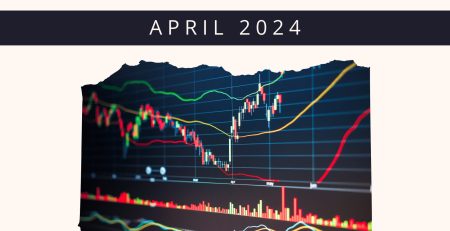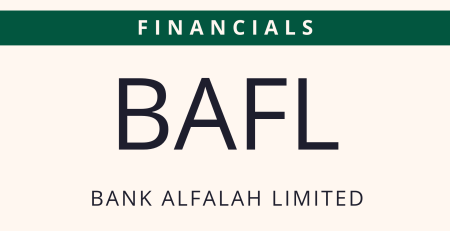What is JSMFETF and is it a good long-term investment?
In 2024, the JS Momentum Factor ETF, known as JSMFETF, had an incredible run. Its performance caught the eye of many retail investors and poured fuel into the belief that this was one of the best new ways to play the Pakistan Stock Exchange. But 2025 has been a different story. Year-to-date, the ETF is down 9.1 percent. That reversal has led to confusion, disappointment, and a lot of finger-pointing.
So the big question is, did we fall for the hype? Or is there something deeper going on here that most investors missed?
📢 Announcement: We're on WhatsApp – Join Us There!
To answer that, we first need to understand how the JSMFETF actually works.
What Kind of ETF Is This?
JSMFETF follows what is called a “smart beta” strategy. That may sound complicated, but in reality, it is just a blend of two familiar ideas in investing. On one side, you have passive investing, where an investor simply buys a diversified index and holds it long term. On the other side, you have active investing, where fund managers pick and choose stocks in an attempt to beat the market.
Smart beta sits somewhere in between. Instead of relying on human decisions, it follows fixed rules to decide which stocks to buy and sell. These rules are based on certain measurable characteristics, often referred to as “factors.”
So What Factor Does JSMFETF Use?
There are many factors that a smart beta strategy can be built around. Some common ones include volatility, size, quality, and liquidity. For example, the KSE-100 Index is largely based on market capitalization. Bigger companies get more weight in the index.
JSMFETF, on the other hand, is built around the factor of momentum. That is why it is officially called the JS Momentum Factor ETF.
In trading, momentum is a powerful concept. It is based on the idea that stocks which have already been going up will likely continue to go up. You can think of it like Newton’s first law of motion: an object in motion stays in motion unless acted upon by an external force. In this case, the object is a stock, and the motion is its price trend.
The ETF tries to capture this momentum and ride it while it lasts.
How Does JSMFETF Select Its Stocks?
The process is quite systematic. Every month, the ETF takes all the companies in the KSE All Share Index and removes the small-cap ones. It then evaluates the remaining stocks based on two things: their 30-day price performance and their average traded value. The traded value is calculated as price multiplied by volume, which essentially shows how much money is flowing into the stock.
Each stock gets a “momentum score” based on these two inputs. The 10 stocks with the highest momentum scores are added to the ETF for that month. Their weights in the ETF are based on their traded value, although no stock can take up more than 20 percent of the total.
Once the portfolio is selected, it is locked in for a month. It is not changed in between, no matter how the market moves.
Why Do Investors Get Confused?
A common mistake among retail investors is comparing JSMFETF to the KSE-100 Index. That is the wrong benchmark. The ETF is designed to outperform the KSE All Share Index, not the KSE-100. If you are measuring it against the wrong index, you are likely to draw the wrong conclusions.
Another misunderstanding is about how it responds to market rallies. Just because the broader market is going up does not mean the ETF will also go up. It is not built to follow the market. It is built to follow momentum in individual stocks. If the momentum in the market is being driven by stocks that are not part of the ETF’s top 10, then the ETF will not benefit from it.
A perfect example of this happened recently in June and July.
The Case of the Missed Banking Rally
During these months, the stock market broke out of a major resistance level. The rally was led by the banking sector, which saw strong momentum on the back of macroeconomic developments. The JS Banking Tracker Index (JSBGKTI) clearly showed that banks were behind the gains.
But JSMFETF had a problem. At the start of June, when it selected its 10 stocks, not a single bank made the cut. As a result, the ETF missed the entire banking rally. By the time the next rebalancing happened in early July and banks were finally included, the momentum in that sector had already cooled down.
This is a limitation of the strategy. Because it only rebalances once a month, it can miss out on sharp short-term moves. If you are an investor who wants to catch every breakout or play short-term market themes, this ETF will likely disappoint you.
Does the Strategy Work in the Long Run?
Despite these short-term limitations, the long-term data looks promising. JS has tested the strategy over the last 20 years, covering 240 months in total. Out of those, the ETF beat the KSE All Share Index in 51 percent of the months. That might not sound like a huge win rate, but what matters more is the size of the wins versus the losses.
When the ETF outperformed, the average outperformance was 5.1 percent. When it underperformed, the average loss versus the index was 3.4 percent.
We can use these numbers to calculate the expected value. The formula is simple:
(5.1 percent x 51 percent) + (-3.4 percent x 49 percent) = 0.935 percent
This means that, on average, the ETF adds around 0.935 percent of value over the index every month. If this edge holds, it translates to about 6 percent outperformance per year.
This is the real value of JSMFETF. It is not about short-term pops or flashy gains. It is about consistent, rules-based investing that generates alpha over time.
High Volatility, But Not High Risk
Another thing that scares off retail investors is the ETF’s volatility. It is true that JSMFETF is more volatile than the KSE All Share Index. Historical data shows a volatility of 11.4 percent for JSMFETF, compared to 7.4 percent for the broader index.
But volatility is not the same thing as risk. A better measure of risk-adjusted returns is the Sharpe Ratio, which tells us how much return we are getting for every unit of risk.
According to this metric, JSMFETF scores a Sharpe Ratio of 1.59, while the All Share Index comes in at 1.25. That means the ETF is delivering more value for the amount of risk you are taking.
So while the ride may be bumpier, the reward justifies the journey.
Let’s Talk About Dividends
Many retail investors justify holding on to the ETF because of the dividends. While it is true that the ETF is required to pay out 90 percent of its earnings, there is an important detail to keep in mind.
The word “earnings” here does not include capital gains. Whether realized or unrealized, gains from rising stock prices are not part of the distributable earnings. That means you should not expect a large dividend just because the ETF had a good month. The two are not directly linked.
If you are holding the ETF purely for dividends, make sure you understand this limitation.
So, Is It Worth It?
JSMFETF is not for everyone. If you want to follow the market, play short-term trends, or enjoy stable performance month after month, this ETF will frustrate you. It will underperform in certain months, miss big rallies, and test your patience.
But if you understand how it works and are willing to stick with it over the long term, it has the potential to outperform the broader market. The strategy is rules-based, data-driven, and has been tested across two decades of market history.
In the end, it all comes down to knowing what you are buying. JSMFETF is not a shortcut to riches, but for the right investor, it can be a smart addition to a long-term portfolio.
⚠️ This post reflects the author’s personal opinion and is for informational purposes only. It does not constitute financial advice. Investing involves risk and should be done independently. Read full disclaimer →













Comment (1)
The are distributing dividends every quarter what are the expected dates for dividend announcements